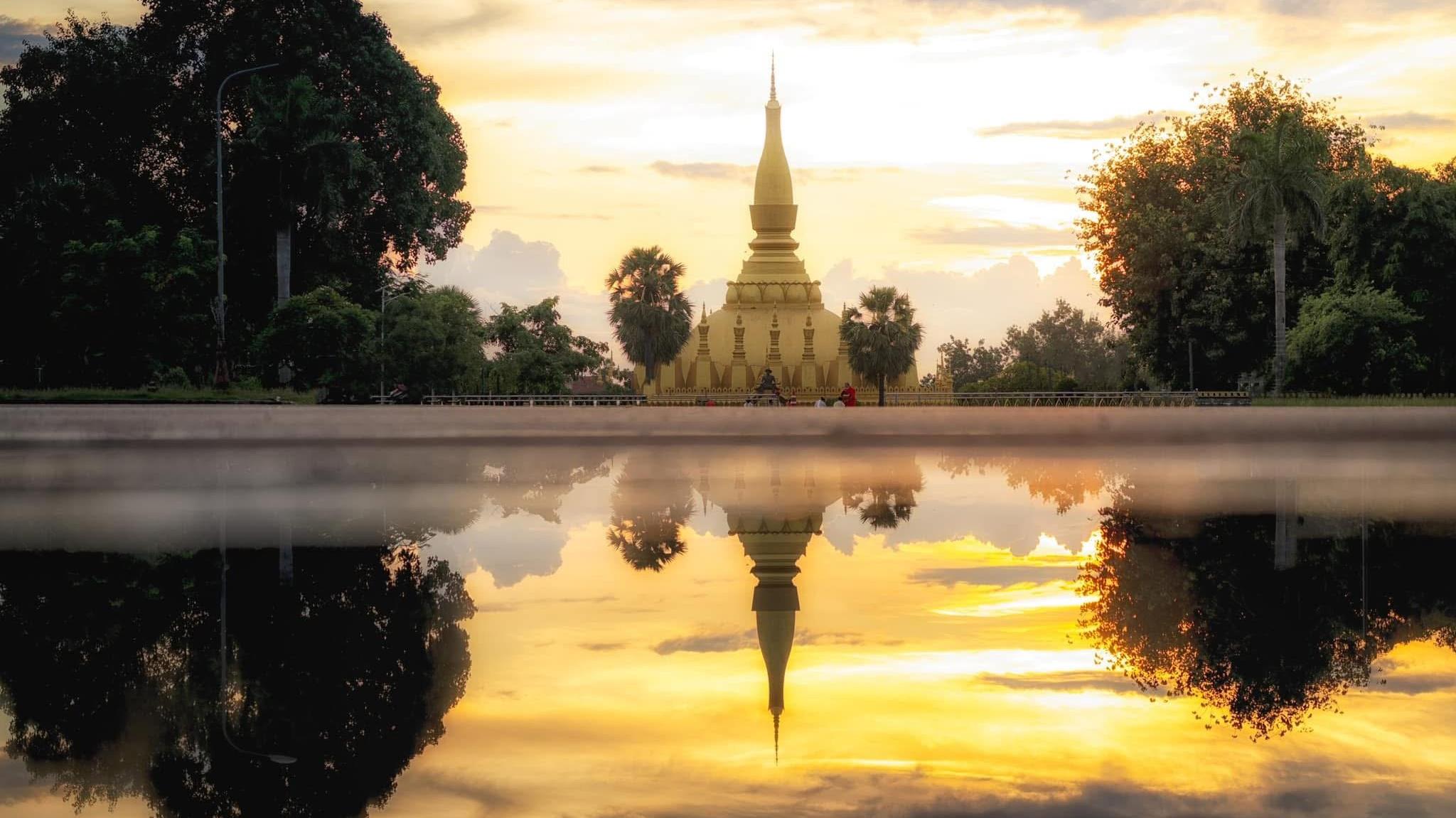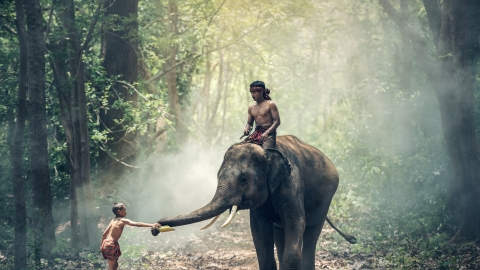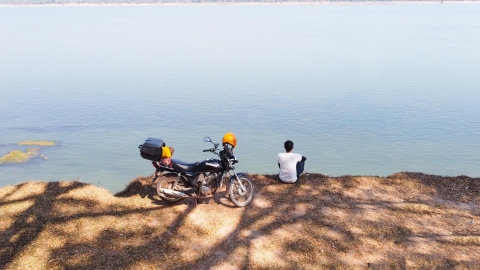Although Laos’ history is one of war, revolution and hardship, it all takes place in a beautiful tropical paradise. The ironic contrast between man and nature, between a turbulent past and the peaceful beauty of nature, accidentally makes the Land of a Million Elephants a particularly interesting destination, full of unexpected discoveries that you can find nowhere else on Earth.
Let's visit some iconic destinations of the history and culture of the Land of a Million Elephants:
Patuxai
Patuxai, also known as the Arc de Triomphe (Victory Monument) of Laos, is one of the most prominent landmarks in the capital Vientiane. This structure was built in the 1950s - 1960s to honor those who fought for Laos' independence from French rule. Patuxai Gate was designed with a style that combines French architecture and traditional elements of Lao culture. Although inspired and shaped like the Arc de Triomphe in Paris, Patuxai has distinct highlights such as carvings and motifs inspired by Lao religious and cultural symbols, Buddhist images and typical Lao patterns.



Patuxai is about 49 meters high and has five floors, with an observation deck at the top where visitors can climb to enjoy panoramic views of Vientiane city and the Mekong River. In addition, the lower floors of the gate also have corridors where valuable works of art and objects of Lao history and culture are displayed.

That Luang
Located about 4 km from the center of Vientiane, That Luang is not only a prominent architectural work but also the most important symbol of Buddhism and Lao national sovereignty. Believed to have been built in the 3rd century to preserve the relics of the Buddha, this stupa has undergone many restorations, the most notable of which was in 1566 under the reign of King Setthathirath. Although destroyed in wars, That Luang has been restored and retains its glorious beauty to this day.

The tower is located on a high and flat land in the East of the capital, standing out with its unique architecture and considered the largest and most beautiful stupa in Laos. This is considered the Buddhist stupa of the Land of a Million Elephants, 44 m high and 69 m wide, designed in the shape of a pyramid. Surrounding the main tower are 30 smaller stupas. The highlight of this project is the top of the tower covered with 500 kg of gold leaf, creating a sparkling and impressive appearance, symbolizing the prosperity and splendor of this country.

Vat Phou
Located in Champasak province, southern Laos, Vat Phou (or Wat Phu) is an ancient Hindu temple complex, recognized by UNESCO as a World Cultural Heritage in 2001. This is one of the oldest and most unique religious structures in Southeast Asia, bearing the architectural and religious imprints of the Khmer civilization, existing from the 5th to the 12th century - the same period as the Angkor complex in Cambodia.

The special feature of Vat Phou is its location at the foot of Phou Kao Mountain, a sacred mountain in Khmer culture, where the ancients believed that it was the residence of the gods. The temple was built facing the mountain, different from the usual east-facing layout of many other Hindu temples, showing the indigenous mindset blended with Hindu beliefs.

Pak Ou Caves
Located about 25 km north of Luang Prabang city, Pak Ou Cave is a famous destination not only for its amazing natural beauty but also for its sacredness and profound cultural value. This cave is located on the cliff above the Mekong River, where Buddhists from all over come to offer thousands of small Buddha statues, creating a sacred and mysterious space.

Pak Ou means “river mouth” because the cave is located right at the intersection of the Nam Ou and Mekong rivers. Divided into two main parts: the Upper Cave (Tham Ting) and the Lower Cave (Tham Theung), each part contains thousands of Buddha statues of various sizes and shapes, worshiped by Buddhists over the centuries. These statues are not only worship symbols but also a testament to the prosperity of Lao Buddhism and the deep religious beliefs of the people here.

Lao Arts Museum
Opened in January 2025 in Nonsaath village, Xaisettha district, Vientiane capital, this is the largest multi-functional complex in Laos, including galleries, art exhibition - festival center, information building, souvenir shops, restaurants, hotels, resorts...

The Lao Arts Museum was established to preserve and showcase traditional and modern Lao art, and to provide an insight into the development of this culture. The museum’s collections include sculptures, paintings, ceramics, and traditional handicrafts made from natural materials such as wood, bronze, stone, and textiles. These works are not only beautiful to look at, but also tell stories about Lao religion, history, and customs.







































